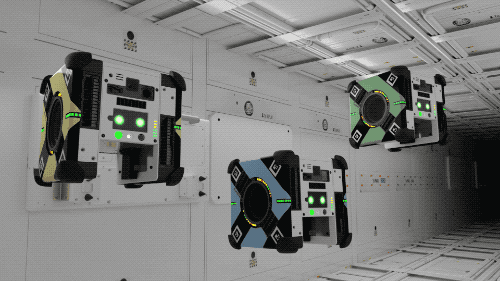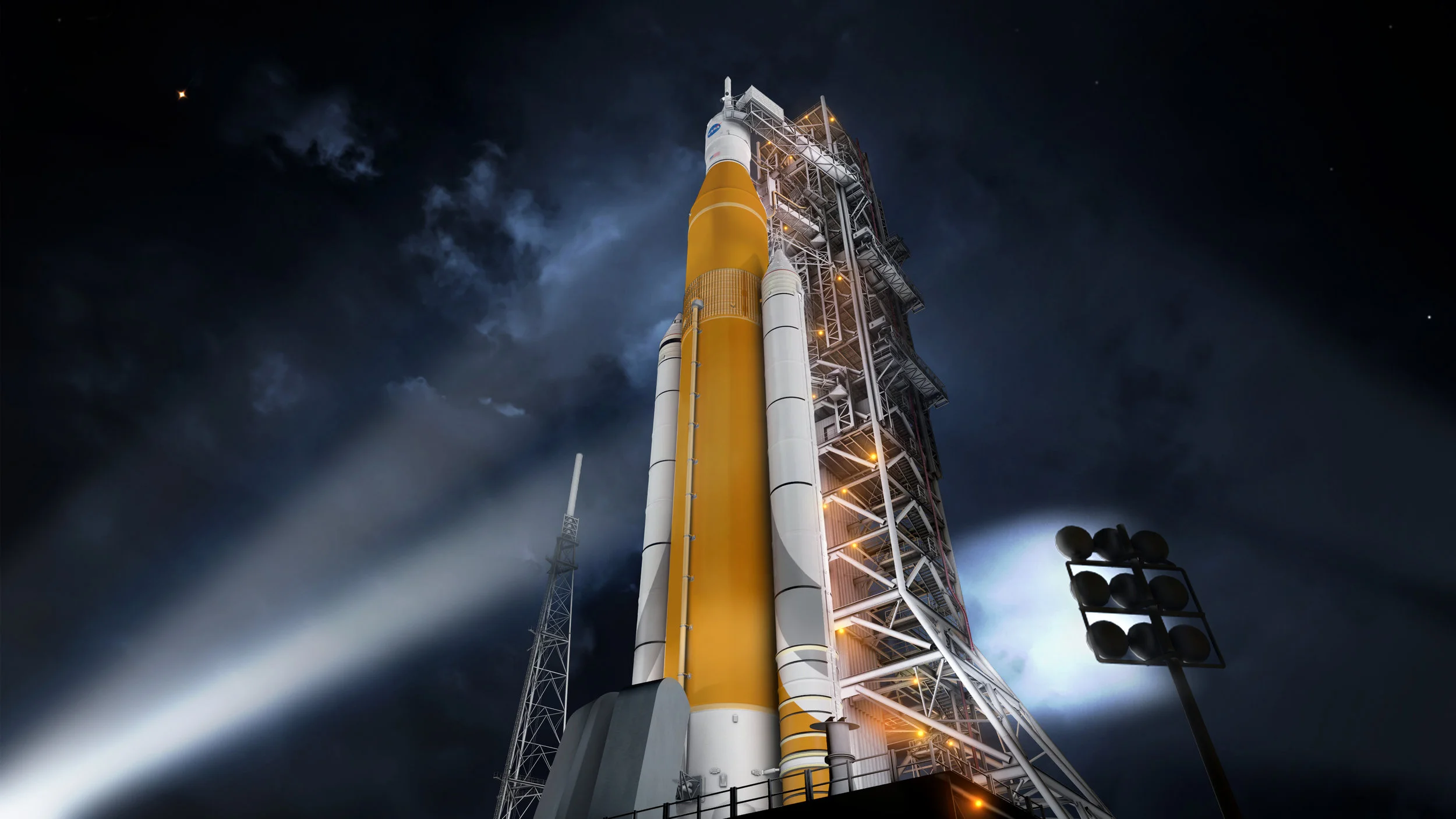NASA’s new autonomous robots known as “Astrobees” are set to launch to the International Space Station (ISS) on the NG-11 Cygnus cargo launch, and they are definitely a sign that we are living in the future. Coming in at one cubic foot each, these robots are designed to buzz around the ISS performing a myriad of tasks and could save astronauts aboard the space station hundreds of hours in menial labor.
The Astrobee robots have been in development at NASA’s Ames Research Center in Mountain View, CA since 2014 as part of the NASA Human Exploration Telerobotics 2 (HET2) project. These new cube-shaped robots will be replacing their predecessors aboard the space station, the “Synchronized Position Hold, Engage, Reorient, Experimental Satellites” (SPHERES). Inspired by the lightsaber training droid in Star Wars — A New Hope, SPHERES served as the ISS’s first generation of free-flying robotic assistants.
NASA Astronaut Shane Kimbrough floats inside the Destiny module with the SPHERES experiment aboard the ISS. Photo credit: NASA
The SPHERES experiment launched to the ISS in 2006 and allowed station crews over the years to test things like magnetic propulsion, synchronized satellite flight configuration, and new hardware for robotic automation. SPHERES also supported experiments from Zero Robotics. An ongoing program that will continue to use the Astrobee platform, Zero Robotics is a middle and high school student robotics programming organization that hosts experiment competitions to be performed aboard the ISS.
Flying around the space station’s microgravity environment using small canisters of carbon dioxide as propellant, the SPHERES robots are powered with AA batteries. By comparison, the Astrobees are a serious upgrade. Astrobees come equipped with an advanced electrical power system (EPS) board, and can fit up to four rechargeable Li-ion batteries, which store a total of 196 watt-hours of energy — equivalent to around twenty iPhones. And when it’s time to recharge, the Astrobees dock themselves to a charging station, refill their batteries, then go right back to work, all autonomously. They come with their own navigation and obstacle avoidance systems, a variety of cameras, an RFID scanner, laser pointer, microphones and speakers, and expansion ports to attach additional hardware to conduct experiments aboard the station.
They have names:
Honey is yellow,
Bumble is blue, and Queen is green.
Though their cubed shapes may not align with the anthropomorphized robotic future science fiction has conditioned us to expect, Astrobees will be able to serve as extra sets of eyes, ears, and even hands for ground-teams in Houston to test new technologies, and a platform for third party experiments such as those from Zero Robotics. A dedicated payload bay for accessory attachments expands the Astrobees’ capabilities even further. One of these accessories will launch to the ISS this summer on SpaceX’s CRS-18 mission, and will utilize the experimental “Gecko Grip” technology to move supplies and more around the station. Arm and grappling attachments allow the Astrobees to grip the station’s handrails for stability, assist in running science experiments, maintenance, and handling cargo. The Astrobee robots can do all this autonomously, or controlled directly from stations on Earth, or astronauts aboard the station.
Outline of Astrobee components. Image credit: NASA
Propelled by fans, the Astrobees can turn on any axis, and move in any direction as they navigate the modules of the ISS. A built-in RFID scanner gives the Astrobees the ability to scan, inventory, and verify the tens of thousands of parts, tools, and supplies that astronauts are otherwise responsible for tracking. Astrobees will also be capable of measuring air quality and sound levels throughout the ISS, a task which takes about two hours for crews to complete. Automating these sort of housekeeping chores aboard the space station will save crews hundreds of hours over the life of the Astrobee robots, which are expected to remain on the ISS until it is eventually decommissioned. This frees up time for additional science, and also presents NASA with a unique and needed opportunity to study the relationship between humans and robots in space.
The space agency’s recent commitment to land American astronauts on the Moon by 2024, and Mars by 2033, will require a compliment of robots to assist humans working in extremely remote conditions. The ability, for instance, to remotely perform minor maintenance to long-term space craft in between crewed flights will be crucial to NASA’s Lunar Gateway plans. A potential Astrobee successor could perform this type of work.
NASA IRG Deputy Group Lead Maria Bualat holds a demo Astrobee at Wallops Flight Facility. Photo credit: Josh Dinner/theOrbital.space
“Gateway is only going to be crewed ten percent of the time,” Deputy Group Lead for NASA’s Intelligent Robotics Group (IRG) Maria Bualat told theOrbital.space, emphasizing the need for remote maintenance capabilities. Bualat stated that something “very similar” to Astrobee is expected to facilitate upkeep aboard Gateway in the absence of crew. “For future missions, absolutely those sorts of tasks can be taken over by a robot in the exploration vehicle. We expect to have robotic helpers... Robots can help look for issues on the Gateway, and perhaps even address them.”
Stored aboard a Northrup Grumman Cygnus cargo craft, the first two of three Astrobees are scheduled to launch atop an Antares rocket to the ISS April 17, at 4:46pm EDT from NASA’s Wallops Flight Facility, in Virginia.

















